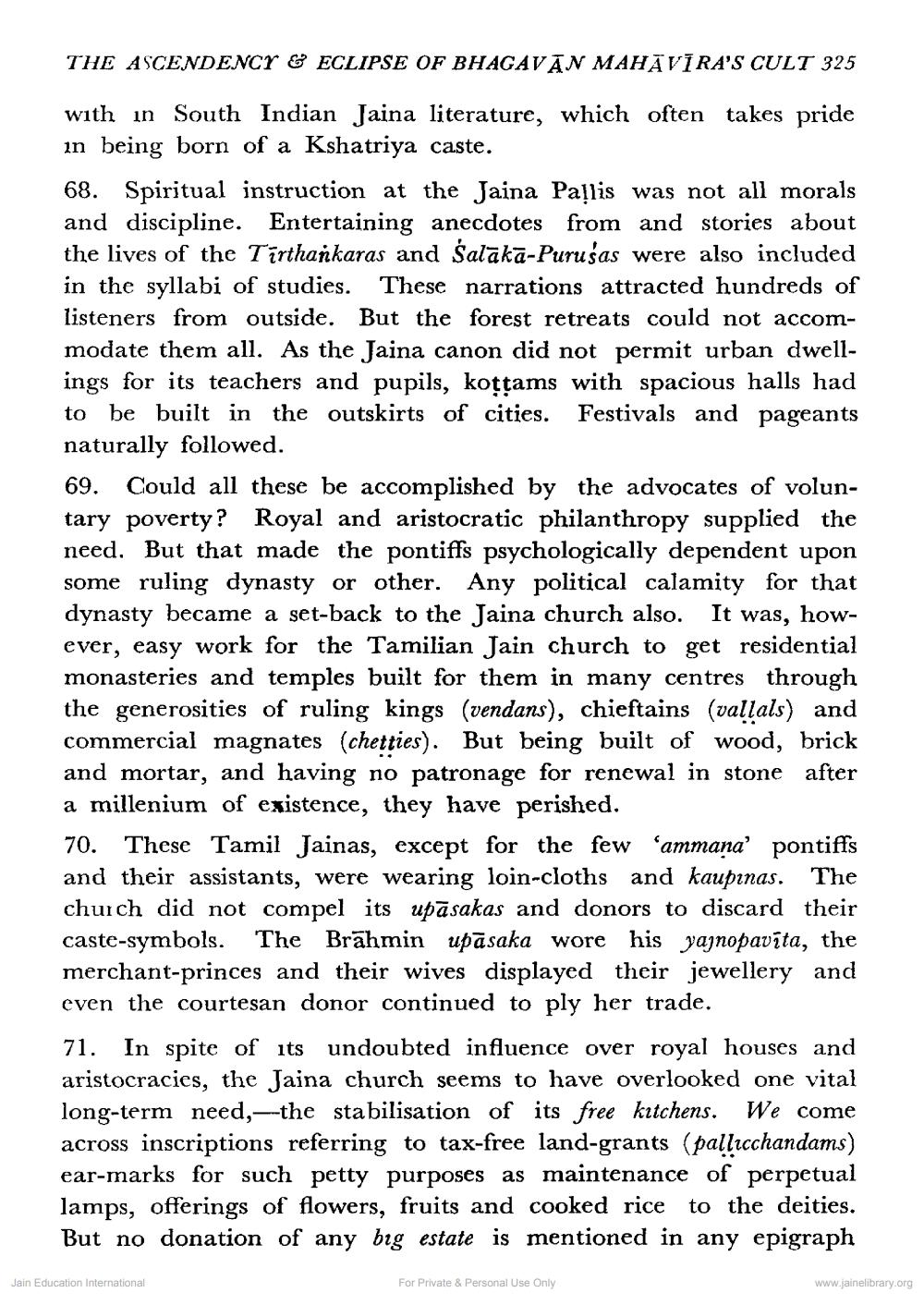________________
THE ASCENDENCY & ECLIPSE OF BHAGAVĀN MAHĀVĪRA'S CULT 325 with in South Indian Jaina literature, which often takes pride in being born of a Kshatriya caste.
68. Spiritual instruction at the Jaina Pallis was not all morals and discipline. Entertaining anecdotes from and stories about the lives of the Tirthankaras and Salākā-Purusas were also included in the syllabi of studies. These narrations attracted hundreds of listeners from outside. But the forest retreats could not accommodate them all. As the Jaina canon did not permit urban dwellings for its teachers and pupils, koṭṭams with spacious halls had to be built in the outskirts of cities. Festivals and pageants naturally followed.
69. Could all these be accomplished by the advocates of voluntary poverty? Royal and aristocratic philanthropy supplied the need. But that made the pontiffs psychologically dependent upon some ruling dynasty or other. Any political calamity for that dynasty became a set-back to the Jaina church also. It was, however, easy work for the Tamilian Jain church to get residential monasteries and temples built for them in many centres through the generosities of ruling kings (vendans), chieftains (vallals) and commercial magnates (chetties). But being built of wood, brick and mortar, and having no patronage for renewal in stone after a millenium of existence, they have perished.
70. These Tamil Jainas, except for the few 'ammana' pontiffs and their assistants, were wearing loin-cloths and kaupinas. The church did not compel its upāsakas and donors to discard their caste-symbols. The Brahmin upasaka wore his yajnopavīta, the merchant-princes and their wives displayed their jewellery and even the courtesan donor continued to ply her trade.
71. In spite of its undoubted influence over royal houses and aristocracies, the Jaina church seems to have overlooked one vital long-term need,--the stabilisation of its free kitchens. We come across inscriptions referring to tax-free land-grants (pallicchandams) ear-marks for such petty purposes as maintenance of perpetual lamps, offerings of flowers, fruits and cooked rice to the deities. But no donation of any big estate is mentioned in any epigraph
Jain Education International
For Private & Personal Use Only
www.jainelibrary.org




